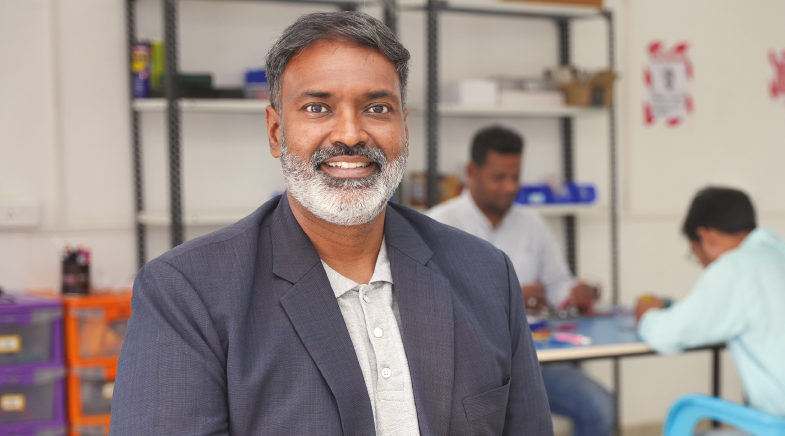Cities of the future
-
- from Shaastra :: vol 03 issue 11 :: Dec 2024 - Jan 2025

How they are reinventing themselves to fight climate change – and creating models for others to follow.
One of the purposes of our Cover Stories, as I've said earlier in this space, is to set the ball rolling for future coverage. We choose themes that are central to the economy or to people's lives, and try to provide a sweeping overview of the key trends that will drive the field in the future. Cover Stories are not always exhaustive. They are an introduction, a prologue, a curtain-raiser. As we expect the trends to amplify, our reporters will return to them with frequent updates in shorter or longer formats.
The rapid growth of cities has been a topic of discussion in the media for a while now, especially from the time when the buzz around smart cities started. Several world cities are bursting at their seams and, as a consequence, there has been plenty of bad news to go around. Given the poor infrastructure in many cities, climate change is expected to hit them especially hard. However, some cities are also reinventing themselves and creating models for other cities to follow.
REIMAGINING CITIES
The Cover Story package takes a hard look at what urban designers want to do over the next two decades. From the 1990s onwards, they have known that cities need to be resilient to fight climate change, and that the fight can be won or lost at the level of cities. As often happens in such cases, the more visionary designers want to reinvent the concept of cities as thriving ecosystems – economic as well as biological. Their programmes are largely focused on building cities from scratch. Such grand and expensive ideas are prone to missteps unless they are managed exceptionally well. Many have floundered. However, such cities also become laboratories to test what will work on a large scale.
We focus on likely themes for cities in the future: pedestrianisation, a 'rewilding', and people-centric development.
In this issue, we have chosen a few aspects of cities that will become a recurring theme over the next 25 years. Central to building these 'cities of the future' is a rewilding of sorts, by bringing trees and wildlife into spaces where people live and work. Another theme is to make cities less dependent on cars and more dependent on mass transit, cycling and walking. A third theme is to design cities around people and communities rather than looking solely at technological fixes. Such grand ideas, which have been tried elsewhere, are about to take root in India. Our Cover Story package is an introduction of sorts to these concepts.
A START-UP SPECIAL
The magazine this time is a combined December and January issue, with 24 pages more than usual. These extra pages are filled with a Special Feature on start-ups. This space has been a focus area for Shaastra ever since the magazine was launched. Although we do not mention it explicitly, examples for a lot of our stories are drawn from start-ups. New ideas begin either in a research lab or in a start-up, and Shaastra journalists are always on the lookout for both and the connections between the two. This Special Feature package, however, goes deeper than usual into this sector. We look at the booming phenomenon of academic start-ups, at the improving infrastructure in the country for deep tech entrepreneurs, and at the financing environment. We also pick out a few sectors for more up-close attention: these sectors – space, healthcare, semiconductors, quantum, and robotics – are, we think, going to be important for the rest of this decade.
This issue also has a rich fare from opinion columnists. K. VijayRaghavan writes (How the brain works) on the fascinating phenomenon of sentience. Avinash Tripathi addresses a critical issue (The future of growth): how to keep innovating and sustain growth even when resources dwindle. Mahesh V. Panchagnula explores (Bridging the academia-industry gap) ways to bridge the gap between academia and industry. Food writer Krish Ashok offers amusing insights (A feast for the senses) into how sight, smell and taste combine to provide a sensory delight while eating.
We hope that the extra fare provides you enjoyment during the holiday season and through the new year.
See also:
The future of cities
Fantastic plastic!
Power to the people
Walking the green talk
Greening our cities
Birds and the city
Cities' growth pains
Have a
story idea?
Tell us.
Do you have a recent research paper or an idea for a science/technology-themed article that you'd like to tell us about?
GET IN TOUCH














